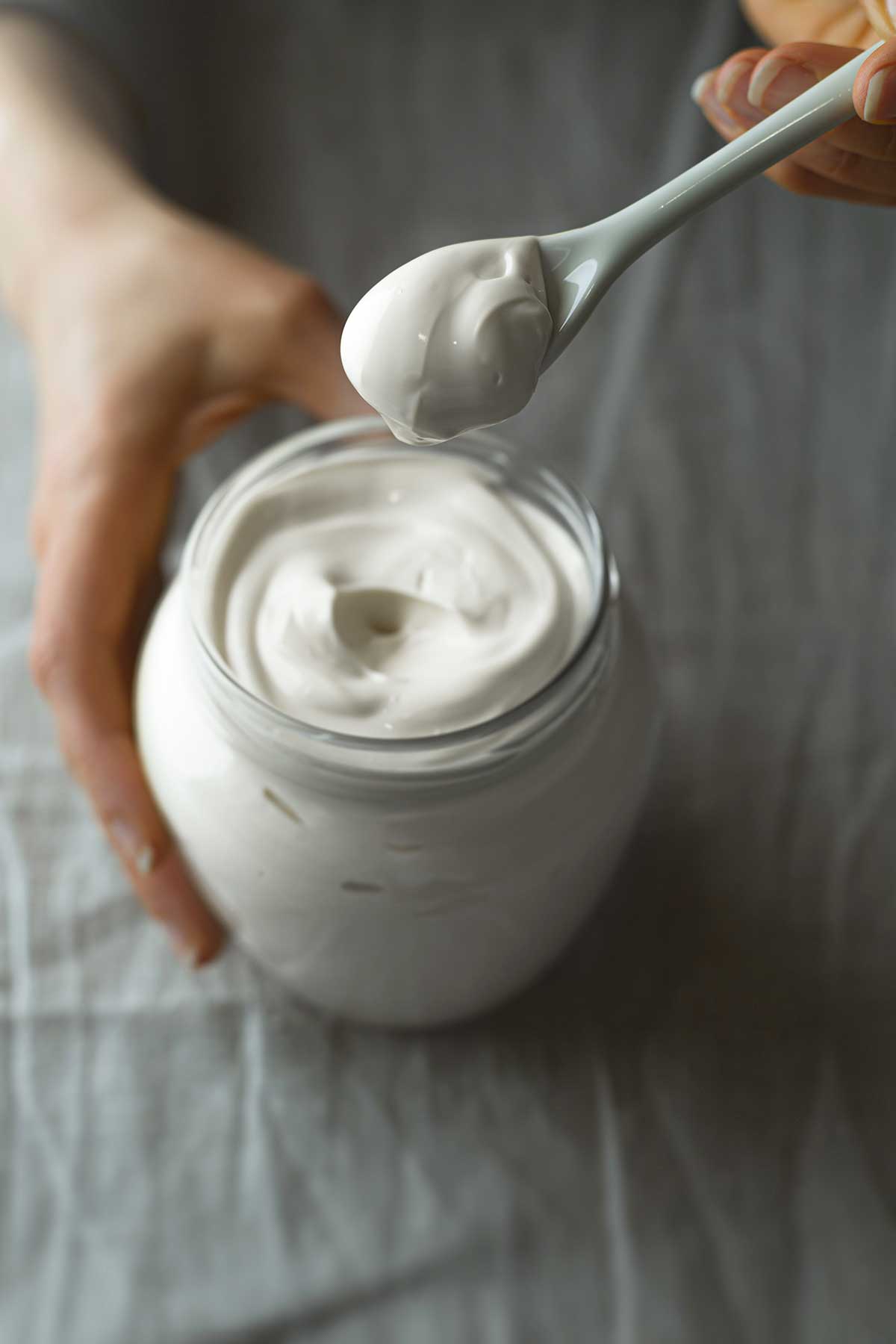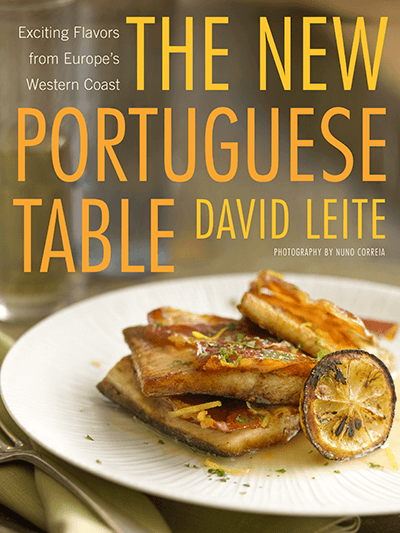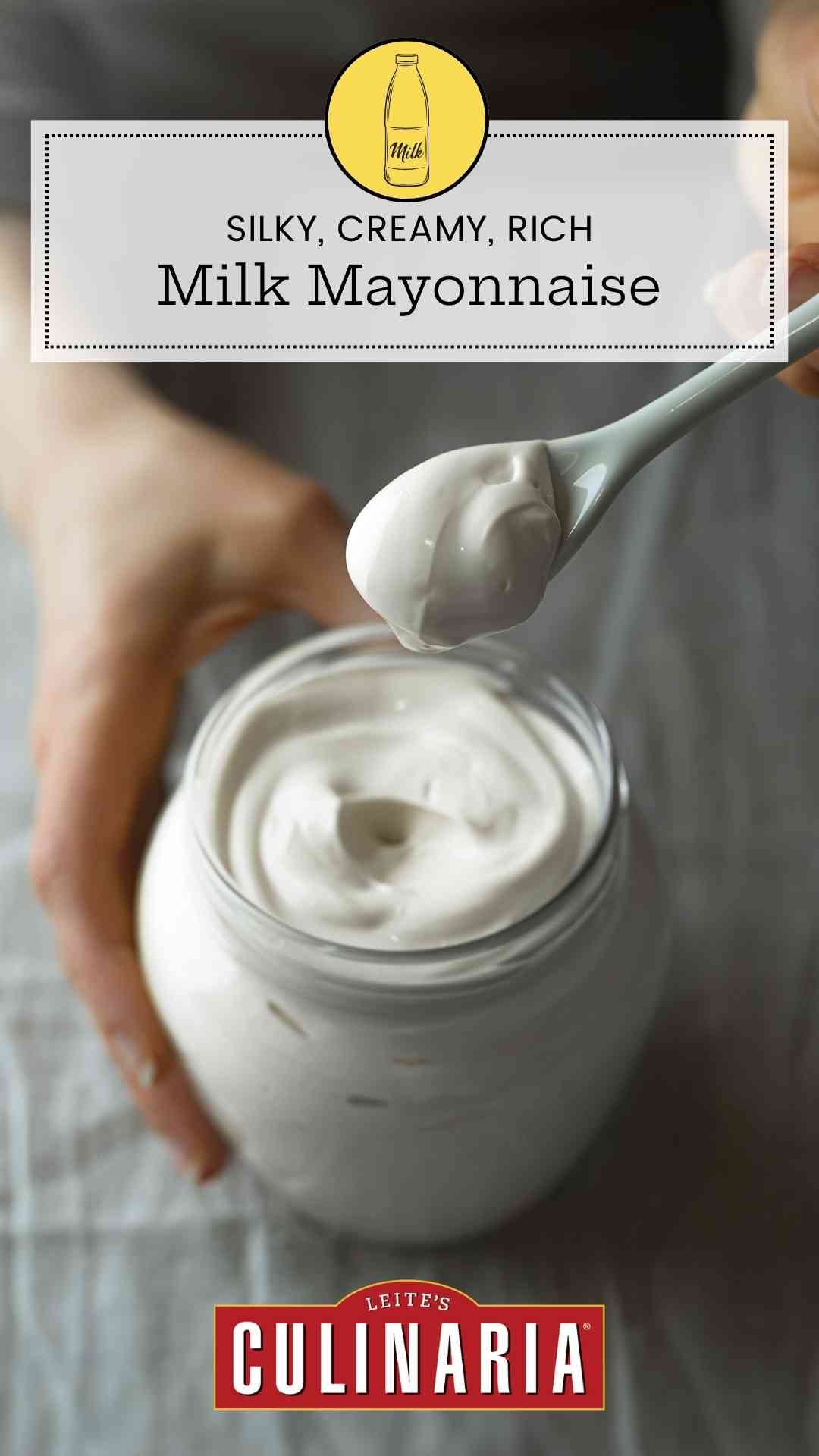
This is one of those recipes that require quotation marks, not out of affectation, but because it’s not a true mayonnaise. It contains no egg yolks or mustard. It’s nothing more than an emulsion of milk and oil. More Brazilian than Portuguese, it’s just now beginning to be used on the Continent. The taste is lighter and cleaner than that of egg-based mayonnaise, allowing other flavors to come through.
☞ Read the Article: The Secret Behind Milk Mayonnaise
Since I was given the recipe, I haven’t stopped finding ways to cook with it. The master recipe is only a canvas for additions. Besides the uses in this book, I’ve smeared the variations on grilled meats and fish, used them as dips and in dressings, spread them on sandwiches, and stirred them into potato salads, much as I do with actual mayonnaise.
Why Isn’t my Mayonnaise Emulsifying?
Like all emulsions, this recipe can be a bit finicky. But adding the oil in a thin stream and stopping when the right consistency is reached is the key. For almost foolproof results, a handheld blender is best, but a small canister blender with a narrow base will do (tall and narrow is best here). Don’t do as some of us did and assume that a stand mixer or food processor will work—it just won’t. If you’re working with a less-than-powerful immersion blender, the consistency of the mayonnaise may turn out thinner than you’d expect. You can help it along by slowly adding 2 more tablespoons of oil to the milk mayonnaise as you continue to blend and it will thicken nicely.

Milk Mayonnaise
Ingredients
- ⅓ cup very cold milk
- ¾ teaspoon fresh lemon juice
- 1 small garlic clove, peeled
- ⅛ teaspoon white pepper
- About ¾ cup vegetable oil, or 1/2 cup (118 ml) vegetable oil plus 1/4 cup (60 ml) olive oil
- Kosher salt
Instructions
- Combine the milk, lemon juice, garlic, and pepper in a 2-cup glass measuring cup. Using a handheld blender (or a blender), buzz on high for 30 seconds until frothy.
- With the motor running on high, slowly pour in the oil a few drops at a time, and gradually increase this to a fine thread, moving the blender up and down, until the mixture thickens lusciously and resembles a soft mayonnaise. You may need more or less oil.
- Season with salt to taste. The mayonnaise will last up to 1 week in the fridge.
Notes
Milk mayonnaise variations
Clockwise from top right: cilantro-ginger, curry, anchovy, sun-dried tomato.
Cilantro and Ginger Milk Mayonnaise | Maionese de Leite com Coentros e Gengibre
Add 1 loosely packed cup of well-dried fresh cilantro leaves and tendril-soft stems and a 1 1/2-inch peeled and grated thumb of ginger to the cup along with the milk, 1 3/4 teaspoons of lemon juice, and the pepper. Omit the garlic. Whir in the oil as directed above. Stir in 1 scallion cut into thin slices on the diagonal.Anchovy Milk Mayonnaise | Maionese de Leite com Anchovas
Add 6 anchovy fillets (generous 1 tablespoon) packed in oil to the cup along with the milk, lemon juice, garlic, and pepper. Whir in the oil as directed above. Omit the salt.Curry Milk Mayonnaise | Maionese de Leite com Caril
Add 2 teaspoons of your favorite curry powder to the cup along with the milk, lemon juice, garlic, and pepper. Whir in the oil as directed above. Before using, let this sit for an hour or so in the fridge to bloom.Tomato Milk Mayonnaise | Maionese de Leite com Tomate
Add 1 1/2 tablespoons of double-concentrate tomato paste to the cup along with the milk, garlic, and pepper. Omit the lemon juice. Whir in the oil as directed above. Stir in 1 tablespoon minced oil-packed sun-dried tomatoes.
Nutrition
Nutrition information is automatically calculated, so should only be used as an approximation.











I’m totally intrigued by this milk mayonnaise recipe! I will definitely give it a try!
Let us know what you think.
David, not sure on your lemon juice math in response to Cesar. When I make ricotta at home, I use 1 ounce lemon juice for each quart of milk (plus 4 ounces cream per quart of milk), providing a lemon juice to dairy ratio of 1:36.
Three-fourths of a teaspoon of lemon juice to 1/3 of a cup of milk…3.75 ml of lemon juice to roughly 79 ml of milk is basically a 1:21 lemon juice to dairy ratio.
Now, in my cheese recipe, the milk is at 190+ degrees when the lemon juice is introduced, and I’m pretty sure the heat makes a difference. But on straight lemon juice to dairy ratios, you’ve got more curdling power in your method for making “mayo” than I have in my method for making cheese.
Like I said, Greg, not a food scientist! Let me be more specific, though—the lemon juice goes into very cold milk (so that may affect it) and the milk is immediately buzzed in the blender or with an immersion blender, so I’ve never seen any visible signs of curdling, as you see with cheese, which is heated and sits. It may coagulate, as Shirley said, but the oil is added so quickly afterwards, it’s hard to notice.
Hi, Interesting post but in all fairness, much “surprise” is given to the finding. Furthermore, it is not accurately named. The oil volume fraction in mayonnaise is about 0.8, much like butter (another emulsion, but a water in oil one). In this recipe, the oil volume fraction is about 0.65, which might NOT render the known solid-like properties for mayo. Furthermore, the addition of lemon juice curdles the milk protein in the milk which is key in the texture of the final ‘mayo’ (which is not the functionality lemon juice plays in real mayo). A plethora of culinary creations have been and will be enabled by smart manipulation of aspects such as: oil to protein ratio, solid fat content, protein type, pH, surfactants etc…
All in all, great to have this sort of contribution BUT you need to keep them within the confines of accuracy.
happy to talk more!
A food-loving scientist
Cesar, couldn’t agree more. But if you read the post carefully, I make it clear that this is not a mayonnaise. And in the book, the word mayonnaise is in quotes, to set it apart from a true mayo. I used the term only because that is what it is called in Portuguese: maionese de leite. Also, the lemon juice doesn’t curdle the milk, at least in any significant or visible way–and which Shirley Corriher corroborates.